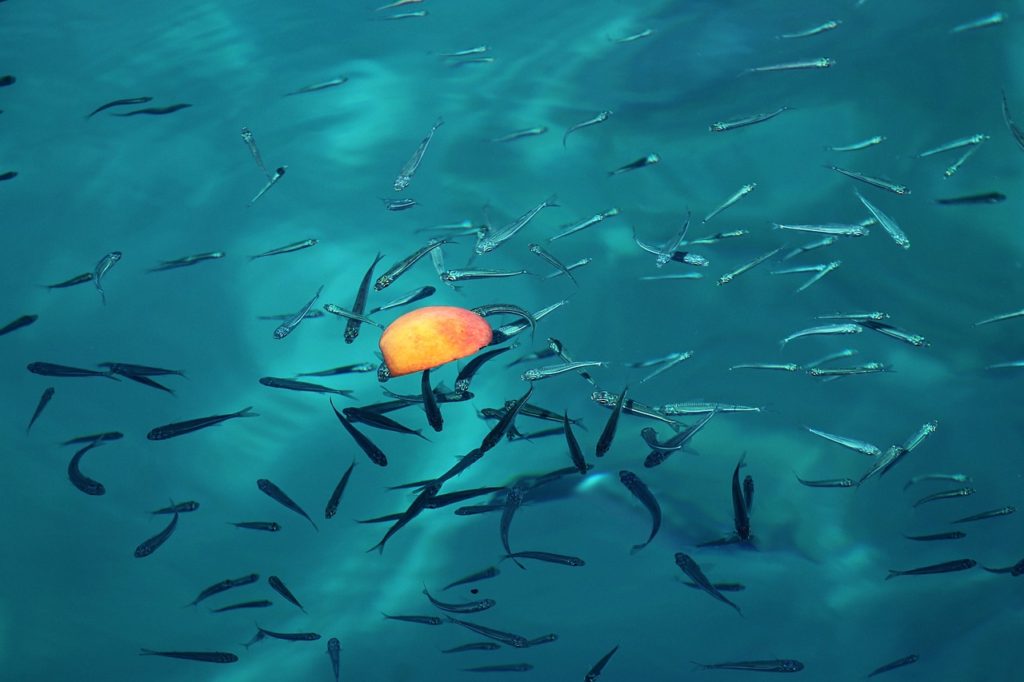Fishmeal is a highly nutritious product prepared from fish waste and offal left over from fish processing industries. It is used in a number of industries including agriculture (as fertilizer), cattle industry, poultry industry, ruminants and aquaculture industry.
Fish waste or by-products have long been used to feed household animals. Norway was the first country reported to use fishmeal and herring in poultry diet. They used to extract fish oil from fish waste that has also been added to animal diets. At the beginning of 1910, United Kingdom started using fishmeal as fertilizer. As of 21 century, almost every country is utilizing fishmeal in different animal industries, not only utilizing but also manufacturing and coping with the increased demand and prices of fishmeal. As compared to 2017, fishmeal and fish oil consumption has increased over 90 percent.
Now we discuss main countries using fishmeal in animal feed industry:
- Peru is the leading topper country as fishmeal manufacturer and fishmeal exporter. The major part of rising demand in fishmeal has been escalated by Peru. In 2017, fishmeal production was 735,000 tons and in 2018, it rose to 141,000 tons and exported 1.03 million tons of fishmeal. It utilize more than one third part of its production in its own animal industry including:
- Pig farming (mostly raised domestically, consumption of fishmeal is 60-65%).
- Cattle industry (it face shortage of pastures due to some critical climatic conditions) in that time fishmeal served as a best alternative to pasture for cattle both dairy and beef),
- Goat farming (10-15%)
- Horse farming (mainly for prestigious breeds).
Chile:
It is the second major fishmeal manufacturer and fishmeal supplier in the world. Chile is also ranked high as fishmeal exporter. In 2017, Chilean production of fish was more than 262,700 million tons and fish oil production was 88,500 tons. It uses anchovy and salmon offal as raw materials for fishmeal manufacturing. Chile keeps a huge animal industry thus utilizing and providing more than half of its fishmeal and fish oil production in its own country or industry.
In north central Chile, fodder is available only during the rainy season, to keep year-round supply of feed to the cattle and horses, and goats, growers’ shift to fishmeal. On the other hand in south central regions, Pasteur is available throughout the year but still growers demand for fishmeal in order to get more production.
China:
Although China ranked third in the world as fishmeal manufacturer and fish oil supplier. China was the leading country in the world as fishmeal manufacturer, produced 562,000 million tons of fishmeal during the year 2013. In 2018, fishmeal production in China has been decreased to 262,000 million tons due to some climate fluctuation problems.
The Two-third portion of fishmeal production is utilized by China’s own animal (especially pig industry) and the aquaculture industry. China stands first in pig production. According to NE’s annual data, China has produced 454.4 million pigs, 133.2 million sheep, and 8.8 million horses and utilized 321,000 million tons of fishmeal out of the total of 500,000 million tons in 2001.
Nordic countries:
Nordic countries including:
- Denmark: annual domestic consumption of fishmeal in the animal industry is 102,000- 111,000 between the years 1990-2012. Copenhagen and Triple nine Fish Protein are the fishmeal companies in Denmark.
- Norway: Norway’s Food Safety Agency officially gave instructions to add fishmeal to the daily diets of poultry, pigs, and aquaculture on March 3, 2020.
Malaysia:
Malaysia imports a large number of animal proteins including fish meal, meat, and bone meal annually to meet intensive feed requirements of ruminants (ruminant industry is not well- developed in Malaysia), and non-ruminants. It imports fishmeal from Denmark, Thailand, and Chile.
However, Malaysia also manufactures fishmeal locally but consumption and sale depend upon the price, quality, and supply. The annual local fishmeal production reported lies between 58,000 to 60,000 million tons between the years 2010-2020.
United States:
US is fishmeal manufacturer and fishmeal supplier. Fishmeal companies in the United States produced fishmeal between 2010 and 2020 is recorded as 282,000 million tons to 255,000 million tons. Beef and dairy cattle industry, poultry farming, and pig farming are the major animal industries in USA. Climatic conditions decide the consumption quantities of fishmeal in the animal industry for example, in 2011-2013, serious drought conditions in Midwest areas and upper plains shifted animal feed from fodder to fishmeal.
Today, almost every country in the world is running its own fishmeal companies and own fishmeal suppliers. The rate at which each country manufactures fishmeal depends upon many different factors including prices, availability, awareness, climatic conditions, quality consciousness and availability of alternatives like soybean, linseed oil etc.
References:
Deutsch, L., Gräslund, S., Folke, C., Troell, M., Huitric, M., Kautsky, N., & Lebel, L. (2007). Feeding aquaculture growth through globalization: Exploitation of marine ecosystems for fishmeal. Global Environmental Change, 17(2), 238-249.
Péron, G., Mittaine, J. F., & Le Gallic, B. (2010). Where do fishmeal and fish oil products come from? An analysis of the conversion ratios in the global fishmeal industry. Marine policy, 34(4), 815-820.
Fréon, P., Durand, H., Avadí, A., Huaranca, S., & Moreyra, R. O. (2017). Life cycle assessment of three Peruvian fishmeal plants: Toward a cleaner production. Journal of cleaner production, 145, 50-63.
Hua, K., Cobcroft, J. M., Cole, A., Condon, K., Jerry, D. R., Mangott, A., & Strugnell, J. M. (2019). The future of aquatic protein: implications for protein sources in aquaculture diets. One Earth, 1(3), 316-329.
Cashion, T., Le Manach, F., Zeller, D., & Pauly, D. (2017). Most fish destined for fishmeal production are food‐grade fish. Fish and Fisheries, 18(5), 837-844.

